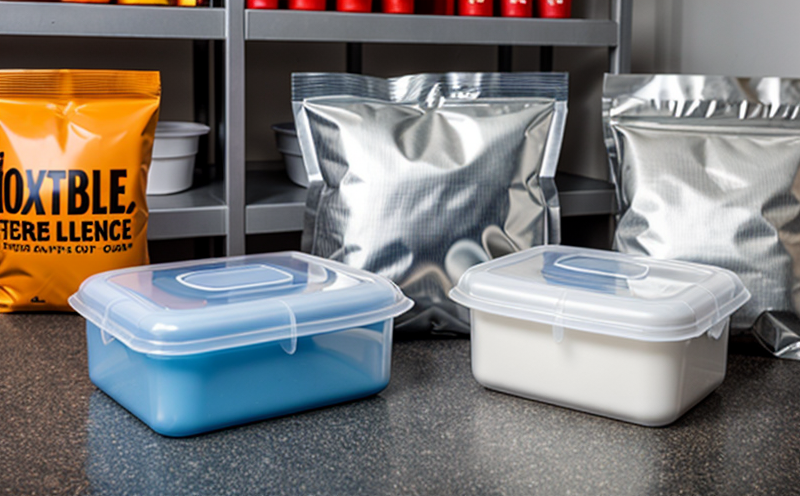Flexible Packaging Testing
Flexible packaging is a crucial component in today's manufacturing and distribution industries. It encompasses a wide range of materials including films, pouches, bags, and laminates, used for food, pharmaceuticals, cosmetics, and other products requiring protection from environmental factors such as moisture, oxygen, and light.
The primary function of flexible packaging is to protect the product during storage and transportation while maintaining its quality. However, effective testing ensures that these packages not only perform their intended protective functions but also meet regulatory requirements regarding safety, performance, and sustainability. This article delves into various aspects of flexible packaging testing, highlighting why it matters, the standards applied, the reasons for choosing this test, and frequently asked questions.
Flexible packaging testing is essential to ensure that products remain safe and effective throughout their lifecycle. From material selection to final product performance, every aspect must be carefully evaluated to meet consumer expectations and regulatory compliance. The tests conducted are designed to assess the physical properties of the materials used in flexible packaging, as well as the integrity and durability of the finished products.
Testing laboratories specializing in this area use advanced equipment and methodologies to evaluate flexibles such as barrier properties (oxygen, water vapor, and moisture resistance), tensile strength, puncture resistance, seal strength, tear resistance, heat-sealability, and microbial barrier effectiveness. These tests are critical for ensuring that the packaging meets industry standards and can withstand real-world conditions.
The testing process begins with thorough preparation of test specimens. This involves cutting samples from the packaging according to specific dimensions defined by relevant standards such as ISO 13962, ASTM D882, or EN 924. Proper sample conditioning ensures that they are at a consistent temperature and humidity before being subjected to various tests.
Once prepared, the specimens undergo numerous evaluations using appropriate instrumentation. For instance, tensile testing machines measure how much force is required to break open the packaging, while puncture testers assess the ability of the material to resist penetration by sharp objects like pins or needles. Similarly, peel adhesion testers determine the strength needed to separate layers within multi-layered packages.
Another important aspect of flexible packaging testing involves checking for leaks and permeability rates through various methods including vacuum bag leak testing systems or gas permeation chambers. These tests help ensure that the barrier properties are adequate enough to prevent contamination from external elements like air, water vapor, or microorganisms.
In addition to physical property assessments, microbiological testing plays a significant role in ensuring food safety and hygiene standards for flexible packaging used in food applications. The presence of harmful bacteria, viruses, or other pathogens could pose serious health risks if not properly contained within the packaging material.
Finally, sustainability considerations have become increasingly important as consumers demand more eco-friendly products. Tests related to recyclability, biodegradability, and energy consumption during production processes are essential components in evaluating sustainable practices associated with flexible packaging development and manufacturing.
Why It Matters
The importance of flexible packaging testing cannot be overstated given its critical role in protecting products throughout their lifecycle. Properly designed and tested packages contribute significantly to product integrity, safety, and overall quality assurance. By adhering to established guidelines like ISO 13962 or ASTM D882, manufacturers can ensure that their flexible packaging solutions meet stringent performance criteria set forth by regulatory bodies.
- Enhanced Product Protection: Effective testing helps identify potential weaknesses in the design early on, allowing for necessary modifications before large-scale production begins. This reduces the likelihood of defects causing damage to contained goods during transit or storage.
- Improved Consumer Confidence: Meeting rigorous standards builds trust among consumers who rely on safe and reliable packaging when purchasing products from reputable brands.
- Increased Market Competitiveness: Companies that invest in thorough testing gain a competitive edge by offering superior quality products at the forefront of innovation within their respective markets.
In summary, flexible packaging testing is vital for maintaining high standards across all stages of product development and distribution. It ensures not only functional excellence but also compliance with international regulations, thereby fostering consumer confidence and enhancing market competitiveness.
Applied Standards
The application of specific standards plays a crucial role in ensuring accurate and reliable results during flexible packaging testing. Some key documents include:
- ISO 13962: This international standard specifies methods for determining the tensile strength, elongation at break, and tear resistance of plastic films.
- ASTM D882: Developed by American Society for Testing Materials (ASTM), this document outlines procedures for measuring the heat-seal strengths of polymeric materials used in packaging applications.
- EN 924: Part of European Norms, this standard provides guidelines on how to prepare samples from flexible packaging films and laminates before conducting mechanical tests.
These standards provide a framework for consistent testing procedures which are essential when evaluating the performance characteristics of different types of flexible packaging. Compliance with these norms helps guarantee that products meet expected levels of quality, safety, and functionality.





